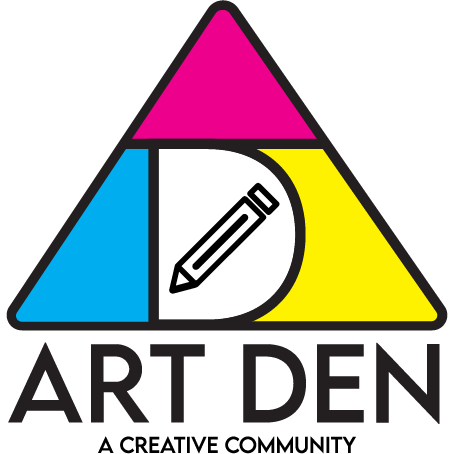
Some of you may remember Bedlam's classic "How not to Steal" post on the old GASR. It was filled with a lot of great information, and we'd like to continue that post with some updated language for Art Den (as well as stances on newer technology).
What it mostly boils down to is this: If you're referencing someone else's photography/art, don't claim it as your own. Don't sell it for money. Ask their permission.
We hope this will be a helpful resource for you, and if you have any questions, you can absolutely reach out to us!
This post and thread may be updated as new topics/information comes along in the art world.
INDEX
1. How to Use Photos in Your Art Without Stealing
2. Copying vs. Referencing vs. Tracing
3. How to Properly Use References (Coming soon)

Using photos in your artwork is possible, but there are important guidelines to follow.
• Can You Use Photos in Your Artwork?
Yes! You can use photos, but only under specific conditions. Using an image you found on Google without permission or proper licensing can be considered theft. To protect both yourself and other creators, it’s essential to understand the differences between stock photos, royalty-free images, and commercial-use images.
• What Are Royalty-Free and Commercial Use Photos?
A royalty-free photo allows you to use an image without paying a recurring fee. However, not all royalty-free images allow commercial use. If you plan to sell or profit from your artwork, ensure the images you use are marked for commercial use. Always check the image's license or contact the artist directly to clarify their terms of use.
• Using DeviantArt Stock Images
DeviantArt is a popular resource for stock images, but remember: not all stock is free for commercial use. Before using an image, check its category and description. If it’s not labeled as "stock," it’s likely not available for use in your art. When in doubt, reach out to the artist to ask for permission. They’ll appreciate your respect for their work, and you’ll avoid potential legal trouble.
• Art Den’s Stance on AI Art
At Art Den, we value the creativity and originality of human artists. AI-generated art is not allowed on our platform. While AI can be a powerful tool, we believe that using AI-generated content undermines the hard work and talent of human creators.
Additionally, AI art often contains mistakes, inaccuracies, and ethical concerns, making it unreliable as a reference. Beyond the artistic issues, AI-generated content has significant environmental impacts. The energy required for large-scale AI models contributes to resource depletion and environmental harm. We encourage all artists to avoid relying on AI tools and instead invest in developing their own unique skills.
• Crediting and Permissions
If you’re using stock images, always credit the original artist or photographer. Crediting is an act of respect—it shows that you value their work and effort. In some cases, artists may even require permission before you use their images, especially if you plan on profiting from your art. Always double-check for any specific rules the artist has laid out.
• Why It Matters
We understand that navigating the rules around image use can seem complicated, but it’s important. Using someone else’s work without permission can lead to legal consequences. More than that, it’s about building a creative community where everyone’s rights are respected. After all, would you want your art used without credit or permission?
Where to Find Free and Ethical Stock Photos
Here are some reliable resources for royalty-free and commercial-use stock images:
- CG Textures: Free to use for commercial purposes without credit.
- Wikimedia Commons: Some images are public domain, but always check the licensing.
- DeviantArt: Many stock artists have specific rules; always review their guidelines.
Thank you for taking the time to understand these guidelines. We’re here to support your artistic journey, and respecting the rights of others is a key part of that. If you ever have questions or need clarification, feel free to reach out!

Now, we’re going to explore the differences between Copying, Tracing, and Referencing. It’s important to understand these distinctions so you know which practices are acceptable and which can be considered stealing.
There’s often confusion about the terms copying, referencing, and tracing. While all of these methods involve using other images in the creative process, they’re quite different in practice—and in their impact on both the original artist and your own work. Let’s break down what each term means, and when it’s appropriate (or not) to use these techniques.
Copying
Copying involves recreating an existing piece of artwork, either by reproducing it exactly or mimicking its style. Copying is an important part of learning for many artists, especially in the early stages. Many famous artists have copied the masters to better understand techniques and improve their own skills.
When is Copying Okay?
- For Personal Study: Copying a piece of art for personal practice or study is perfectly fine. It helps you understand how the original artist approached things like composition, color, and technique.
- Not for Sale or Claiming as Your Own: The key here is that you cannot sell or publicly claim the copied work as your own creation. If you share your copied work publicly (like on social media), always credit the original artist and clearly state that it’s a copy for learning purposes.
In Summary: Copying is a great learning tool, but it’s not meant to replace original work. Always give credit where it’s due!
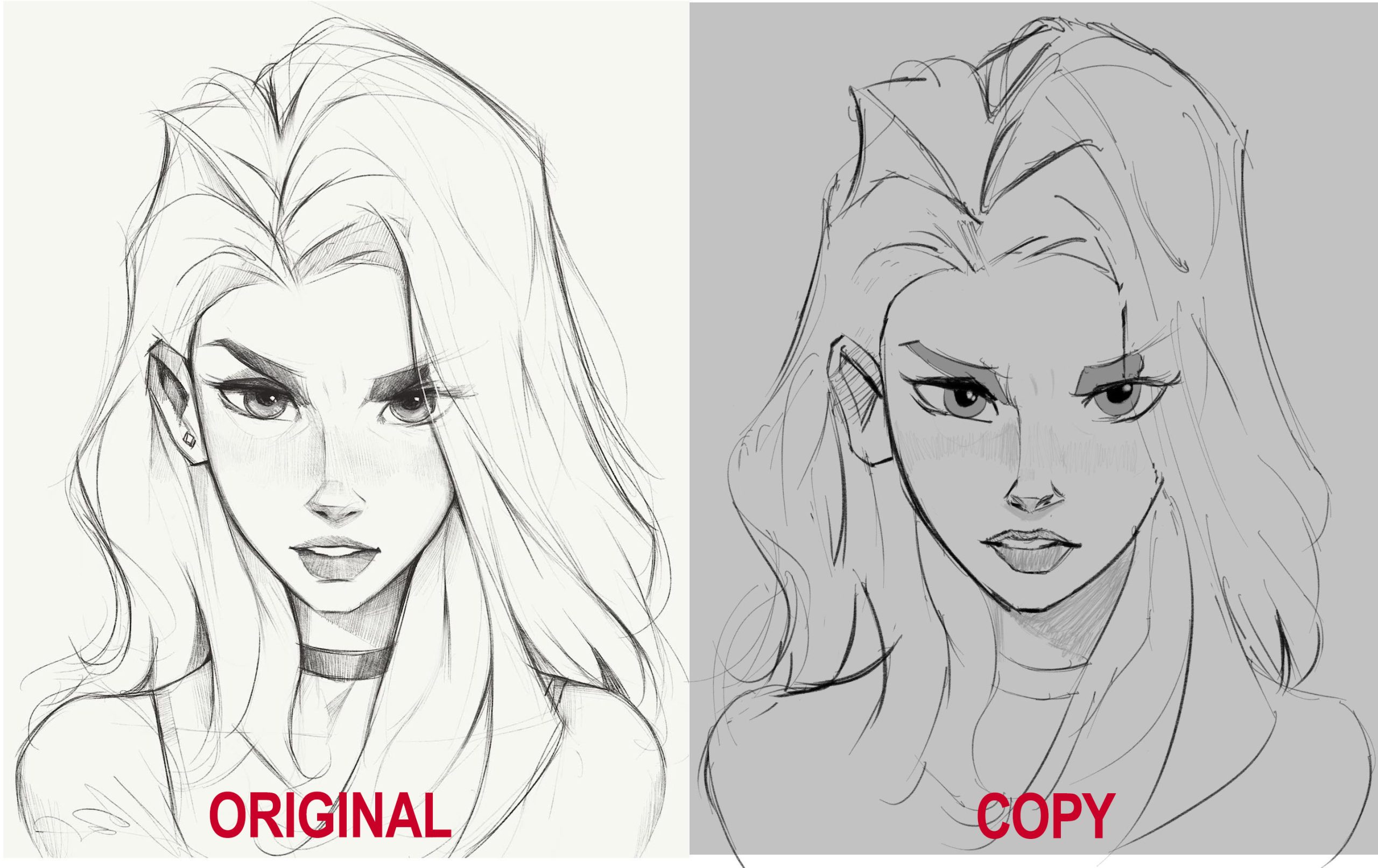
Credit: Reddit Post
Referencing
Referencing is the practice of using an image as inspiration or guidance to help inform your own work. Unlike copying, you’re not recreating the image exactly—you’re using it as a starting point for creating something new and original. Artists often reference things like anatomy, poses, lighting, or environments to make their work more accurate and realistic.
When is Referencing Okay?
- Inspiration: Reference images are essential for artists who want to create original works that are grounded in reality. You might reference photos of a person’s face to get the proportions right in your portrait or use an image of a tree to inform your painting’s environment.
- Create Your Own Interpretation: The key to good referencing is to take inspiration from an image while still creating something uniquely yours. The goal is not to recreate the reference but to use it as a guide.
In Summary: Referencing is a powerful tool for building your own creative work. Make sure you’re using it as inspiration rather than a direct blueprint.
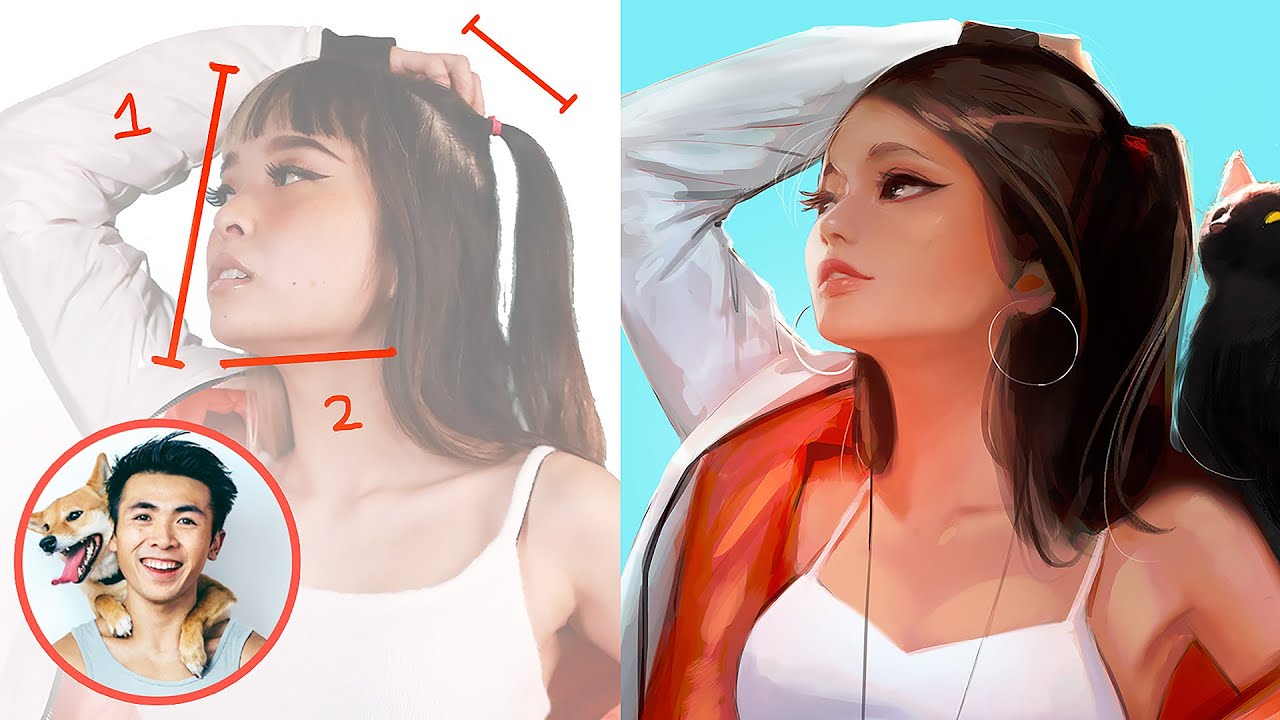
Credit: RossDraws
Tracing
Tracing involves placing a transparent layer over an image and copying the lines exactly. This is a method often used for practice or when working from something you own (like a photo you took). However, when used without permission or proper attribution, tracing can easily cross into unethical territory.
When is Tracing Okay?
- Tracing Your Own Work or Images: Tracing can be useful when you’re working from a photo or image that you own. For example, if you take a photo and trace it to create line art, that’s perfectly acceptable.
- With Permission: You can also trace images if you have explicit permission from the original artist or if the image is clearly marked as royalty-free for use in art projects.
- For Practice Only: Tracing can be a helpful learning tool, especially when trying to understand proportions or anatomy. Just remember, if you’re sharing your traced work, always be upfront about your method and give credit where it’s due.
When is Tracing NOT Okay?
- Selling Traced Work: If you trace an image that doesn’t belong to you and attempt to sell it, that’s considered stealing. This applies whether you’re tracing another artist’s drawing, a commercial photo, or even just part of an image.
- Claiming Traced Work as Original: Even if you’re not selling it, passing off a traced work as your own original creation is dishonest and disrespectful to the original artist.
In Summary: Tracing can be a useful tool, but it must be done ethically and with respect for the original creator. Always seek permission when necessary and never claim traced work as your own.
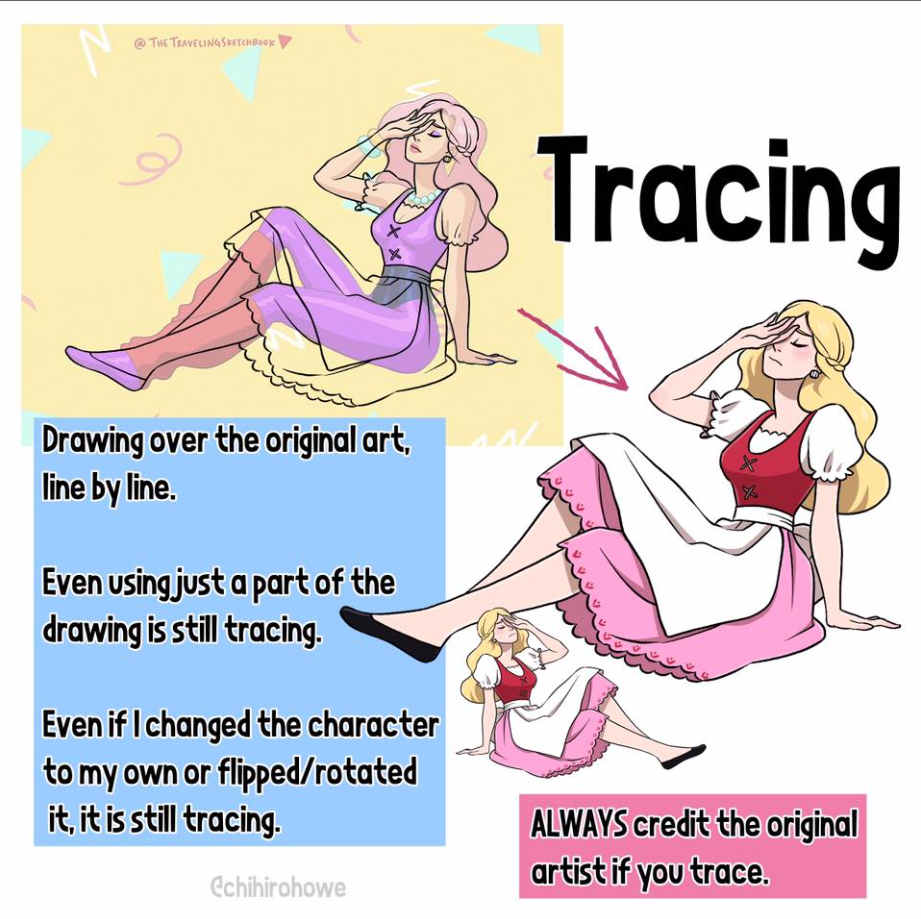
Credit: The differences between tracing, copy, inspiration and reference
(Yet Another) Note on AI Art
At Art Den, we also want to address the rising use of AI-generated art and how it ties into copying/referencing/tracing. Using AI art as a reference is discouraged because of several issues:
-
Accuracy Issues: AI-generated images often contain mistakes in proportions and details, which can mislead your own work. Relying on them for reference may result in unrealistic or flawed art.
-
Ethical Concerns: Most AI art is generated from datasets that scrape images without permission from artists. This is a form of theft, as it uses creative works without proper consent.
-
Environmental Impact: AI art requires massive amounts of energy to generate. The environmental impact of AI tools contributes to resource depletion, making it harmful to the planet.
Instead, we encourage artists to build their skills through traditional methods—referencing, copying (with credit), and even tracing (ethically). This approach not only helps you grow but also ensures you’re contributing positively to both the creative community and the environment.
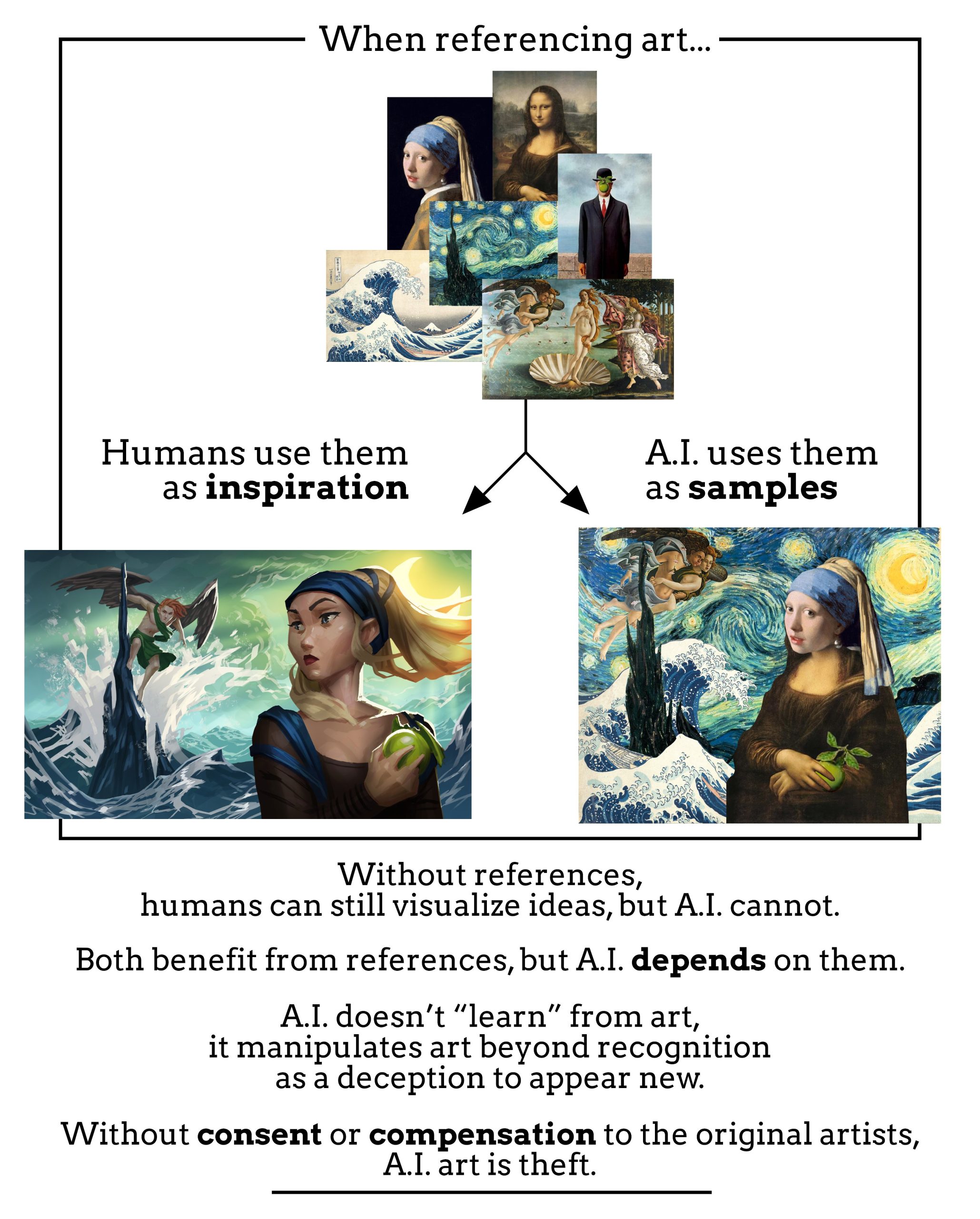
Excerpted from Craig Richardson's tweet
Understanding the differences between copying, referencing, and tracing is key to respecting the work of others while growing your own skills. Each method has its place in the art world, but it’s important to use them ethically. Whether you’re learning by copying, building off references, or practicing through tracing, always give credit where it’s due, ask for permission when needed, and remember that honesty and respect are at the core of our community.
